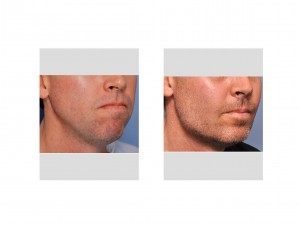
ALTERNATIVES
Jaw angle augmentation can be done by temporary fillers although they do not produce the same angular and well defined effect as an actual implant. There are no bony moving alternatives to creating a jaw angle enhancement effect. Another alternative would be to not place an implant at all.
GOALS
The goals of jaw angle implant surgery is to create a more visually apparent L-shape to the back part of the lower jaw. This could be to simply widen the jaw angle one already has, to vertically lengthen the existing jaw angle, or some combination of both. Jaw angle implants are often part of an overall jawline enhancement effort.
LIMITATIONS
The amount that the shape of one’s jaw angles that can be changed is limited by the thickness of the skin covering the implant and the size and shape of the underlying jaw angle bone. While different sizes and styles of jaw angle implants exist, the final shape that the back part of the jaw will assume after augmentation is limited by the size and shape of the underlying bone on which it sits as well as the thickness of the soft tissues over it.
EXPECTED OUTCOME
Expected outcomes include the following: temporary bruising and swelling around the jaw and neck, temporary numbness of the inside of the cheek, and the skin over the jaw angle and a fine small scar inside the mouth through which the implant was placed. Jaw opening will be stiff for a few weeks after surgery. It often takes weeks to several months for the swelling from surgery to completely resolve and the final shape and contour of the jaw angles to be seen.
RISKS
Significant complications from jaw angle implant surgery are rare but may include postoperative bleeding and infection. More likely but also uncommon complications include aesthetic deformities such as asymmetry and irregularities of the jaw angles due to either a natural asymmetry to the jaw angles or differences in implant placement between the two sides. The implants may also be either too big, too small or otherwise do not create the desired aesthetic effects. Any of these risks may require revisional surgery for improvement.
ADDITIONAL SURGERY
Should additional surgery be required to adjust the position of the implant or change its size or shape, this will generate additional costs.


